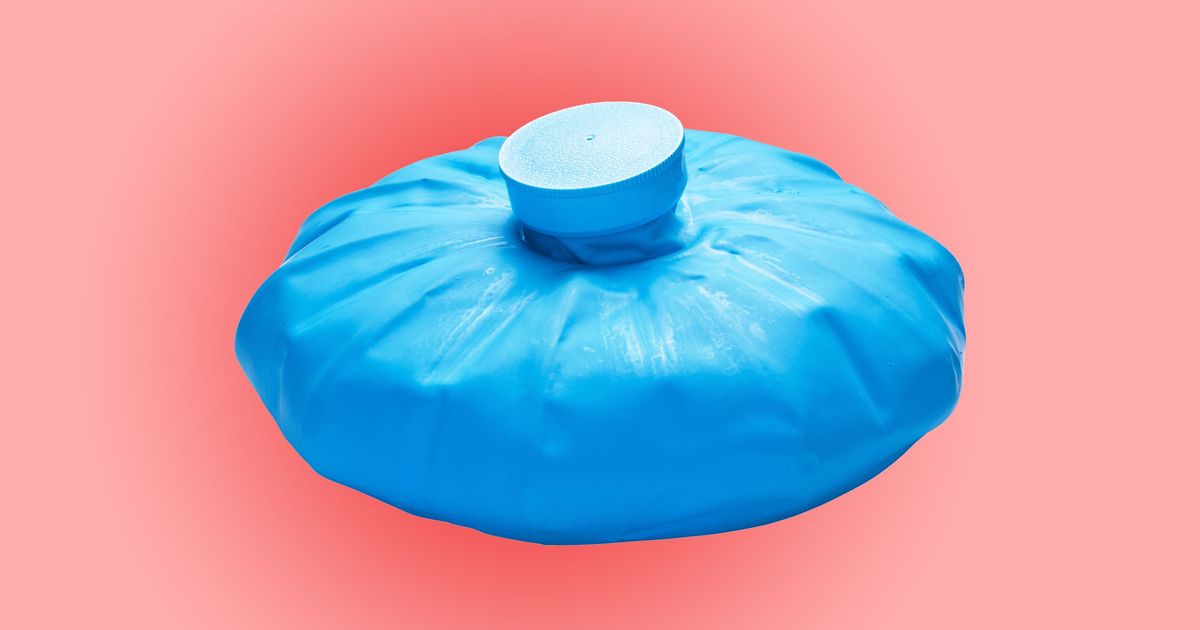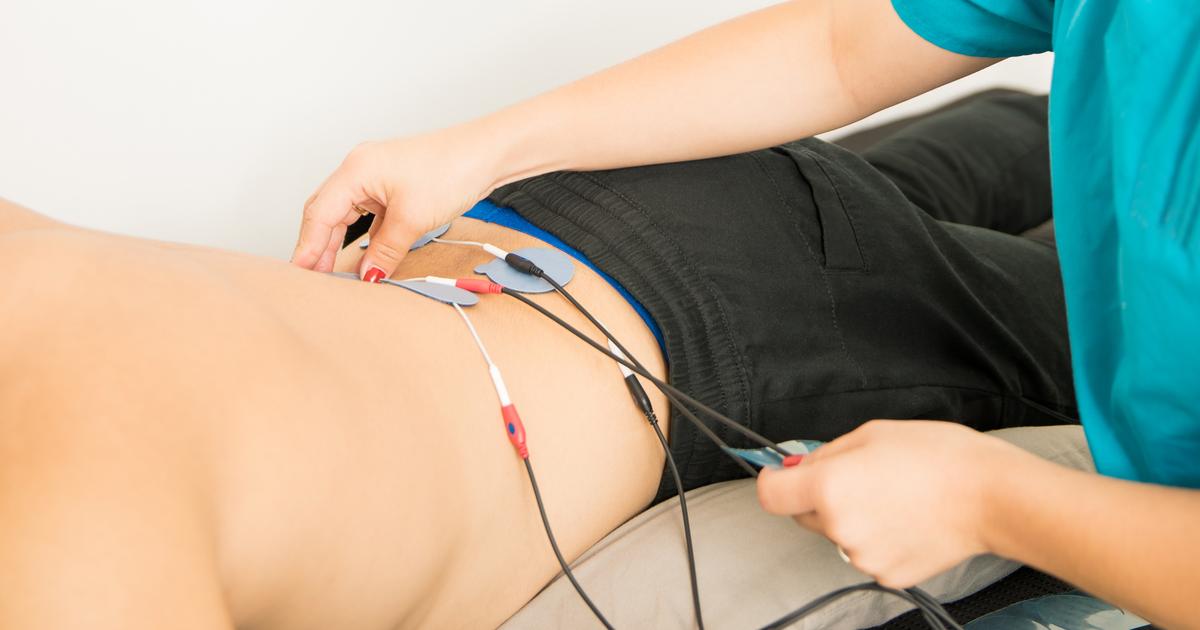Treating And Preventing Piriformis Syndrome
Piriformis syndrome is a painful, musculoskeletal condition that causes radiating hip and leg pain. The piriformis muscle is a diagonal band that runs from the lower sacrum to the greater trochanter of the femur. The sciatic nerve is the largest nerve in the body, originating from the lumbar spine and running across the hip and down the legs. In some individuals, the sciatic nerve is trapped by the piriformis muscle, and the subsequent nerve compression can generate numbness, tingling, and pain in the buttocks or down the back of the leg. Piriformis syndrome can be debilitating, but there are several ways to treat it and prevent it from becoming worse. Get familiar with these now.
Cold And Hot Compresses

The application of heat and ice serve two different purposes in the treatment of inflammatory injuries. When an area of tissue becomes injured, it activates a chain reaction of biochemical events known collectively as the inflammatory response, intended to increase blood flow and activate healing. It is painful, though, as the area becomes inflamed and swollen. Cold compresses or ice packs can reduce the swelling associated with inflammation and stave off some of the pain. Patients don’t want to delay healing, though, so alternately applying cold and hot compresses can help reduce the inflammatory pain of the irritated sciatic nerve while still allowing good blood flow to bring in the necessary nutrients to heal the area.
Physical Therapy And Chiropractic Care

Physical therapy and chiropractic care can offer many solutions to sciatic nerve pain. Physical therapists can help diagnose piriformis syndrome and devise an exercise and stretching routine that can help reduce pain. When the piriformis muscle becomes tight, brought on by exercise, heavy lifting, prolonged periods of sitting, or poor posture, this increases the likelihood of entrapment and irritation of the sciatic nerve, which runs alongside the piriformis. Physical therapists can use massage and stretching techniques to loosen the piriformis and reduce nerve inflammation. Additional leg, hip, and core muscle exercises may be implemented to help strengthen and support the areas around the piriformis as well.
Chiropractors are healthcare providers that specialize in the treatment of spinal misalignment and associated neuromuscular disorders. Misalignment of the lower lumbar spine and sacrum/sacroiliac joint is a common problem. If the sacrum is rotated, it can add extra tension to the piriformis. A chiropractor can slowly correct the offending sacral rotation and relieve the pressure placed on the sciatic nerve.
Osteopathic Manipulative Treatment

Osteopathic manipulative treatment is a musculoskeletal treatment technique designed to alleviate chronic pain. Osteopaths are medical doctors who specialize in muscular complaints and disorders. Although they are licensed to treat any medical conditions, osteopathic medicine is based on the philosophy that the body operates as a whole and disease is caused by some disjuncture between body systems.
The osteopathic manipulative treatment practiced by osteopathic physicians is very similar to chiropractic adjustment methods. Osteopathic manipulative treatment can help restore lumbosacral alignment and loosen and stretch the piriformis muscle. Additionally, an osteopath can prescribe muscle relaxers or pain medication as needed, and help patients devise a routine of home treatments, stretches, and exercises to eliminate and prevent the recurrence of piriformis syndrome.
Maintain Good Form During Exercise

While regular exercise is crucial to managing piriformis syndrome and maintaining overall health, patients need to be mindful of the range of movements they put their body through, especially around the lower back and hips. Avoid lifting while bending at the waist, such as with barbells or kettlebells. Cardio exercises that require the leg and hip to flex into a ninety-degree angle, like stair climbers, should also be avoided. Choose exercise moves that slowly stretch the back, legs, and hip flexors, but do not require circular hip rotations or sudden kicks. All of these types of movements involve recruitment of the piriformis muscle and may be aggravating, so be sure to maintain good form during exercise.
Warm Up Before Exercising

Always warm up before exercising, as launching straight into an exercise routine without a good warm-up can seriously aggravate piriformis syndrome. 'Warm' muscles are those that have been slowly stimulated to increase blood flow and make tissue more flexible. Before doing any exercises that will strain the hip flexors or gluteal muscles, individuals should spend at least ten minutes stretching those areas, and move into the heavier routine slowly. Once the sciatic nerve is inflamed, it will be harder to recover, so preventing a new injury is critical.
Jumping rope for a few minutes or doing jumping jacks are excellent ways to increase circulation before taking on heavy weights. Hip extensions, back stretches, and slow gluteal stretches are also good ways to prepare the piriformis muscle for more demanding activities.
Avoid Triggering Activities And Sitting Positions

Individuals affected by piriformis syndrome are often advised to avoid triggering activities and sitting positions to reduce the occurrence and severity of their pain. Because the piriformis muscle is located in the buttocks region, any type of sitting that places weight on the buttocks can worsen pain from the compressed sciatic nerve. Sitting in a flat position with the legs in front of the individual bent at the knee and elevated at the same level as the rest of the body (like on a bed) is known to exacerbate piriformis syndrome pain. When an affected individual sits on their foot or sits on a hard floor, their pain may become worse. This pain is also known to become worse when an affected individual twists their body sideways or rotates their body in either direction repeatedly. When someone does any hip pivoting when lifting a heavy object or while most of their weight is placed on one foot, it can cause them to experience greater severity of pain. Any activity that involves running is also known to exacerbate a piriformis syndrome patient's pain. Severe pain can be prevented if the patient is careful to abstain from activities and positions known to worsen their pain.
Iontophoresis

Some piriformis syndrome patients may be advised to try iontophoresis to help relieve their pain. Iontophoresis is a therapeutic method that involves the use of an electric current to diffuse a medication or another chemical through an individual's skin. An electrode connected to an iontophoresis machine is used to deliver the medication through the pores in a patient's skin. Iontophoresis has been successful in reducing an individual's pain, inflammation, swelling, and muscle spasms that occur due to piriformis syndrome. Depending on the goals of the treatment, medication is selected that will either be positively charged or negatively charged. The iontophoresis machine has one positive electrode and one negative electrode. If the medicine is negatively charged, it will be put onto the negative electrode. If the medication has a positive charge, the medication is placed on the positive electrode. The medicated electrode is then applied to the area of the patient's buttocks where the sciatic nerve is being compressed, and the non-medicated opposite charge electrode is applied nearby on the body. This mechanism produces a full electrical current that delivers the medication under the skin without the use of any type of needle.
Corticosteroid Injection

An individual experiencing considerable pain due to piriformis syndrome may need a corticosteroid injection as part of their treatment plan. Corticosteroids are medications that reduce the activity of a patient's immune system in the area of which they are administered. The sciatic nerve of piriformis syndrome patients is compressed and can become damaged by the piriformis muscle. This damage causes the individual's immune system to summon white blood cells and other immune components to the site of the damage, resulting in swelling, redness, and inflammation. This inflammation can cause the piriformis muscle of a patient to press down with even more force on their compressed sciatic nerve, resulting in an increase in pain severity. Corticosteroid medications for piriformis syndrome are typically administered via injection to the most painful regions of the buttocks using an insulated needle, electrode, and small electrical current. The affected individual should start to feel some pain relief within three to seven days following the administration of the corticosteroid injection.
Anti-Inflammatory Medication

Individuals who have significant pain caused by piriformis syndrome are often advised to take over the counter anti-inflammatory medications and are sometimes prescribed more potent varieties. Anti-inflammatory medicines work by stopping the process of an enzyme called cyclooxygenase from producing substances called prostaglandins. An affected individual's immune system summons a response to the area of the sciatic nerve because it is being compressed and damaged. Prostaglandin is produced and sensitizes the endings of the nerve, increases the sensation of pain, and causes tissues to swell. Anti-inflammatory medications vary in their duration of action and how strong they are. Ibuprofen and naproxen are common over the counter anti-inflammatory drugs that are effective in relieving pain and reducing inflammation around the sciatic nerve in piriformis syndrome patients. Anti-inflammatory medication is a way to offer substantial pain relief without the harsh side effects and risks of addiction characteristic of prescription narcotic pain-relieving medications.
Botox Injection

When an individual's piriformis muscle has trapped or compressed their sciatic nerve, a Botox injection may be recommended to help ease their pain. Botox is a medical treatment agent produced from the botulinum toxin in a laboratory. Botulinum toxin, which is neurotoxic in nature to humans, is a protein the Clostridium botulinum bacterium produces. Botox works by stopping the nerve terminals from releasing a neurotransmitter called acetylcholine, which is responsible for the transmission of a signal from the nerve to the muscle that tells it to contract. When Botox is injected into the piriformis muscle in the buttocks, the muscle becomes paralyzed so it is no longer able to contract. This mechanism causes the muscle to release its pressure on the entrapped sciatic nerve causing the affected individual to feel pain. Without the contracted muscle pressing on the sciatic nerve, the patient's symptoms will be considerably reduced until the new nerve terminals form at the site. Botox injections usually last from between two and three months.
